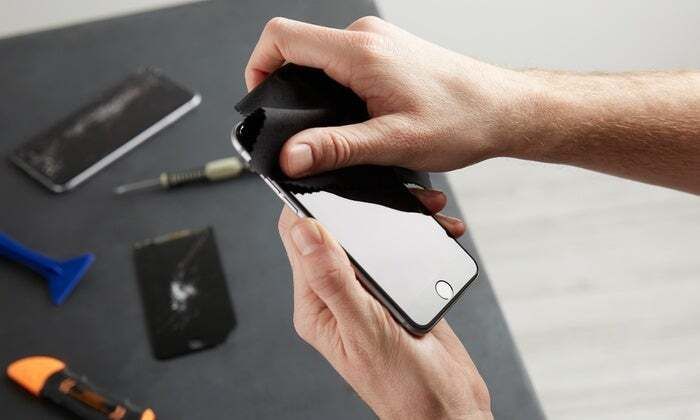Stepping into the world of iPhones is an exciting experience, especially if you've made the switch from another mobile platform. Apple’s iOS ecosystem is designed to be smooth, intuitive, and deeply integrated across devices, making the iPhone much more than just a phone. But for new users, this transition can bring its own set of questions and discoveries. Understanding the unique features, security measures, and available services can make your entry into the Apple universe more rewarding. Whether you're using the latest model or a slightly older generation, knowing how to navigate the device, maintain it properly, and personalize it to your needs will ensure you get the most out of your iPhone experience.
Setting Up Your iPhone Correctly from Day One
As soon as you take your new iPhone out of the box, you're guided through the setup process with step-by-step instructions. During this process, it's crucial to sign in with or create your Apple ID. This account not only lets you download apps and store photos but also syncs your data across all Apple devices. You’ll also be prompted to enable Face ID or Touch ID for enhanced security, and it’s worth setting a six-digit passcode for added protection.
One essential tip is to allow iCloud backup during setup. This ensures your photos, messages, app data, and settings are automatically saved to the cloud, giving you peace of mind in case you ever need to replace or restore your device. It’s also recommended to connect to Wi-Fi and allow automatic software updates so your iPhone stays current with the latest features and security patches.
Learning iOS and Customizing Your Experience
iOS, the operating system behind every iPhone, is designed for simplicity and speed. Navigation is mostly gesture-based now, especially if you're using an iPhone model without a Home button. You swipe up to go home, swipe down for notifications or search, and swipe from the top-right to access Control Center, which includes shortcuts for Wi-Fi, flashlight, and volume.
Personalizing your iPhone is also a fun and essential part of the experience. You can choose a wallpaper, rearrange apps, or create custom widgets for your home screen. iOS allows you to customize Focus modes, such as “Work” or “Sleep,” so your phone behaves differently depending on the time or situation. You can also change notification settings per app to prevent overload and keep distractions minimal.
Mastering Built-in Apps and Features
Apple pre-installs a wide range of native apps designed to make life easier and more productive. The Notes app lets you jot down ideas or scan documents using the camera. Safari offers smooth internet browsing with features like Reader Mode and iCloud syncing. Messages and FaceTime are core communication tools that work seamlessly with other Apple devices.
The Photos app is another essential, with its built-in editing tools and automatic organization of media into categories like “People,” “Places,” and “Memories.” Apple Maps has improved significantly and integrates well with Siri voice commands for hands-free navigation. You can also rely on Apple Wallet to store credit cards, IDs, boarding passes, and more. All these features are intuitive and designed to work together, saving you time and effort.
iCloud: The Heart of Apple’s Ecosystem
One of the most powerful aspects of using an iPhone is access to iCloud. This cloud storage system backs up your contacts, calendars, notes, photos, and more, making it easy to switch between devices without losing anything. For example, if you also use an iPad or Mac, you’ll find your files and apps synchronized automatically.
iCloud also plays a major role in device security. With features like Find My iPhone, you can locate a lost or stolen device on a map, lock it, or erase it remotely. Plus, services like iCloud Keychain securely store your passwords and credit card information, making logins faster and safer. While you get 5GB of free iCloud storage, many users eventually upgrade to paid plans to accommodate growing data needs.
Security and Privacy Settings You Shouldn't Ignore
iPhones are known for their strong stance on user privacy, and Apple provides numerous tools to protect your information. For starters, the App Tracking Transparency feature gives you control over how apps track your activity across the web. You’ll receive prompts asking whether you want to allow or deny tracking, putting decision-making in your hands.
Another key security feature is two-factor authentication for your Apple ID. This adds a second layer of security by requiring a code sent to a trusted device when signing in. Additionally, you can review app permissions under the Settings app to ensure apps only access what they truly need. Location services, microphone use, and photo access can all be managed individually for each app, giving you full control over your data.
Understanding Your iPhone’s Battery Health and Charging Tips
Battery longevity is a concern for most smartphone users, and iPhones offer built-in tools to help you monitor and improve battery health. Under Settings > Battery > Battery Health, you can view your maximum capacity and whether your iPhone supports peak performance. If the battery’s health dips below 80%, you might notice shorter usage times or performance slowdowns.
Apple recommends using certified Lightning cables and chargers, avoiding extreme temperatures, and enabling Optimized Battery Charging, which reduces battery aging by learning your daily charging routine. Over time, however, batteries naturally wear down, and that’s when professional help may be needed. If you're located near iPhone Repair in Rowlett, TX, it's best to consult a trusted technician to evaluate and replace your battery efficiently and affordably.
Exploring App Store and Managing Subscriptions
The App Store is where your iPhone really comes to life. You can browse thousands of free and paid apps, spanning categories like fitness, productivity, gaming, and finance. Every app is reviewed by Apple before being made available, so the risk of malware is minimal. New iPhone users should take advantage of the “Today” tab, where curated lists and editor’s picks help you find high-quality apps.
Subscriptions have become more common in apps, and it's important to manage them properly. You can view, change, or cancel subscriptions directly through your Apple ID settings. It’s easy to forget about a trial or recurring charge, so regularly checking this section can save you money in the long run.
Making the Most of Siri and Voice Commands
Siri, Apple's built-in voice assistant, can make daily tasks quicker and more efficient. You can activate Siri by saying “Hey Siri” or by holding the side button, depending on your settings. With Siri, you can send texts, set reminders, control smart home devices, or get directions—all hands-free.
Beyond basics, Siri integrates with many third-party apps, allowing you to do things like book a ride or start a playlist without touching your phone. You can even create custom shortcuts using the Shortcuts app, automating multiple actions with a single voice command. As you get more comfortable with your iPhone, Siri can evolve into a powerful personal assistant.
How to Protect Your iPhone from Damage
Owning an iPhone also means protecting your investment. Even though most iPhones come with Ceramic Shield or water resistance, they're not indestructible. Using a quality phone case and screen protector can prevent damage from accidental drops or scratches. It’s also wise to avoid charging your phone on unstable or low-quality cables, which can cause internal damage over time.
In case your iPhone does suffer damage, it’s best to avoid attempting complex fixes on your own. Screens, batteries, and internal components are tightly integrated and require professional attention. Whether it’s a malfunctioning speaker, camera issue, or connectivity problem, relying on certified repair experts ensures you don’t worsen the issue or void your warranty.
Connecting with the Apple Ecosystem
The beauty of the iPhone experience lies in its seamless connection with other Apple products. If you own a MacBook, iPad, Apple Watch, or AirPods, everything syncs effortlessly. For instance, you can start an email on your iPhone and finish it on your Mac, or take a call on your Apple Watch without pulling out your phone. These integrations are possible through Apple’s Continuity features.
AirDrop is another useful tool, allowing you to instantly share photos, videos, or documents between Apple devices. With iMessage and FaceTime, conversations continue across platforms without interruption. The deeper you explore the ecosystem, the more you’ll appreciate how interconnected everything becomes, saving time and improving productivity.
Getting Help and Support When You Need It
Even the most user-friendly devices sometimes need support. Apple offers extensive customer service through its Support app, website, and in-store Genius Bar appointments. If you're facing issues, you can usually find troubleshooting guides, forums, and one-on-one assistance with ease. Apple's return and warranty policies are also user-friendly, ensuring you can get a replacement or repair when necessary.
In addition to Apple’s support, local repair shops are a valuable resource. They often provide faster and more affordable services than going directly through Apple, especially for out-of-warranty repairs. Finding a reputable local repair technician can be a huge help in keeping your device in top condition throughout its lifespan.
Welcome to Techy Rowlett, the top choice for professional iPhone repair services in Rowlett, TX. Whether you own the latest iPhone 14, iPhone 13, or a classic model, our skilled technicians are ready to address any issue. We offer efficient repairs for all iPhone models, using advanced technology and high-quality materials. Whether it’s a cracked screen, faulty battery, or other technical problems, we ensure your iPhone functions seamlessly after every repair.



Top comments (0)